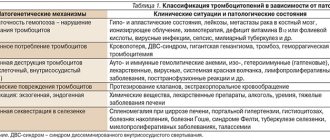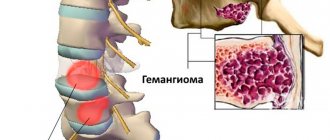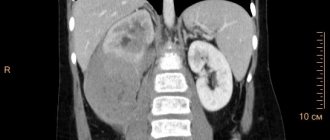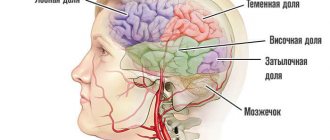Brain meningioma (ICD 10 code – D32.0) is a neoplasm that originates from the arachnoid (arachnoid) membrane of the brain. Brain meningioma has a clear outline morphologically and looks like a horseshoe-shaped or spherical node, most often fused with the dura mater of the brain.
At the Yusupov Hospital, qualified specialists use the most advanced technologies and time-tested effective methods to treat meningioma: radiation therapy, stereotactic radiosurgery, high-quality removal of brain meningioma. Recovery after surgery is carried out in the rehabilitation department of the Yusupov Hospital under the careful supervision of competent rehabilitation doctors and attentive medical staff.
Meningioma: what is it?
As a rule, meningioma is benign in nature, however, like any other tumor localized inside the skull, benign meningioma of the brain is considered relatively malignant, accompanied by symptoms associated with compression of the brain matter. Malignant brain tumor (meningioma) is a less common disease characterized by aggressive growth and a high recurrence rate after surgical treatment.
Most often, brain meningioma is localized in the area of the foramen magnum, cerebral hemispheres, pyramid of the temporal bone, wings of the sphenoid bone, tentorial notch, parasagittal sinus and cerebellopontine angle.
In most cases, meningioma is located in a capsule. The tumor is not characterized by the formation of cysts; it can be small, just a few millimeters, or reach large sizes - over 15 centimeters in diameter. If a meningioma grows towards the brain, a node forms, which over time begins to compress the medulla. If a tumor grows towards the bones of the skull, over time it grows between the cells of the bone and causes thickening and deformation of the bone. The tumor can grow simultaneously towards the bone and brain, then nodes and deformation of the skull bones are formed.
Make an appointment
Classification
The presented pathology has different types and forms. It all depends on the benign quality of the formation, the speed of its growth and the prognosis of the pathology. There are such forms of meningioma:
- Atypical, unusual. It cannot be considered malignant, although it grows much faster. Even after surgery, meningioma of this form may appear again. The prognosis in this case is relatively favorable, since the patient has to be constantly under diagnostic control.
- Typical. Such a tumor is practically not life-threatening. It grows very slowly in the brain and can be completely removed. After surgery, cases of relapse of the disease are extremely rare. The life prognosis is usually positive. This form of brain tumor occurs in 90-95% of cases.
- Malignant. This form of meningioma is the most dangerous, although it is recorded the least often. It develops quickly and severely destroys cells. Life expectancy is significantly reduced. The pathology can only be treated surgically, although this method has practically no positive effect. The prognosis is generally unfavorable.
Reasons for development
The direct causes of the development of meningiomas have not been reliably studied to date. However, there are a number of factors that can provoke their occurrence:
- Most often, brain meningioma is diagnosed in mature patients, after 40 years;
- It is known that women are more susceptible to developing brain meningioma than men. This is due to the fact that tumor growth is greatly influenced by female sex hormones;
- the occurrence of various tumors in the brain is often associated with high doses of ionizing radiation;
- the influence of such negative factors as chemicals and toxic substances, trauma, exposure to a mobile phone and others;
- A significant role in the development of meningioma belongs to genetic diseases, one of which is neurofibromatosis type 2, which causes multiple malignant meningiomas.
Pathogenesis
Arachnoid cells in the tumor are represented by clusters of up to 10 layers of cells and form the outer layer of the arachnoid membrane and granulation. The process of arachnoid hyperplasia is poorly understood, but it may be a stage that precedes tumor formation. More often it is associated with a provoking event - trauma, bleeding, inflammation, chemical irritation. Other provoking processes are: vascular proliferation and the formation of scar tissue. Thus, the thickened dura mater of the brain, located at the border of the meningioma, is represented by a region of the dura mater abundantly supplied with blood vessels. Stimulation of tumor growth is associated with inactivation of proteins from the protein 4.1 family. Genetic changes in atypical meningiomas are characterized by losses in chromosomes in the region 1p, 10, 6q, 14q, 18q, but significant genes are unknown. If we consider anaplastic tumors, they exhibit more complex genetic disorders.
Symptoms and signs
Meningioma of the brain (ICD 10 - D32.0) is characterized by relatively slow growth, so it can develop asymptomatically for a long time.
One of the first symptoms is a headache - dull, bursting or aching. It is distinguished by its diffuse nature and localization in the area of the back of the head, forehead or temples.
The occurrence of other symptoms is associated with the localization of the tumor (compression of certain brain structures). Such symptoms are called focal.
Brain meningioma may be suspected if the following symptoms are present:
- paresis of the limbs (severe weakness, decreased sensitivity, the appearance of pathological reflexes);
- loss of visual fields and other visual disorders (decreased visual acuity, double vision). A characteristic symptom is ptosis - drooping of the upper eyelid;
- deterioration of hearing function;
- reduction or complete loss of smell, olfactory hallucinations;
- epileptiform seizures;
- psychoemotional disorders, behavioral disorders - these symptoms most often manifest themselves as meningioma of the frontal lobe of the brain;
- thinking disorders;
- impaired coordination and gait;
- increased intraocular pressure;
- nausea and vomiting that does not bring relief.
If the outflow of cerebrospinal fluid is disrupted, hydrocephalus and cerebral edema occur, as a result of which patients develop persistent headaches, dizziness, and mental disorders.
Bibliography
- V.N. Kornienko and I.N. Pronin Diagnostic neuroradiology Moscow 2009 0-462.
- Drevelegas A. Imaging of Brain Tumors with Histological Correlations 2011 0-443
- Matsushima N, Maeda M, Takamura M et al. MRI findings of atypical meningioma with microcystic changes. J. Neurooncol. - 2007;82 (3): 319-21.
- P.Tortori-Donati A.Rossi, Pediatric Neuroradiology, 2005 0-1770
- Santelli L, Ramondo G, Della puppa A et al. Diffusion-weighted imaging does not predict histological grading in meningiomas. Acta Neurochir (Wien). 2010;152(8):1315-9
- Sanverdi SE, Ozgen B, Oguz KK et-al. Is diffusion-weighted imaging useful in grading and differentiating histopathological subtypes of meningiomas? Eur J Radiol. 2011
- Siegelman ES, Mishkin MM, Taveras JM. Past, present, and future of radiology of meningioma. Radiographics. 1991;11(5):899-910
- Wallace E.W. The dural tail sign. Radiology. 2004;233(1):56-7.
- Wolfgang Arnold, Uwe Ganzer, Christiano B. Lumenta, Concezio Di Rocco, Jens Haase. Neurosurgery European manual of medicine. Springer-Verlag, T1, 2001, 392
Diagnostics
The most informative and accurate methods for diagnosing meningioma are computed tomography (CT) and magnetic resonance imaging (MRI). As a rule, these studies are carried out with contrast. CT and MRI can determine the size of the tumor, its location, the extent of damage to surrounding tissues and possible complications.
Magnetic resonance spectroscopy (MRS) is used to determine the chemical profile and nature of the neoplasm. Positron emission tomography (PET) allows identifying foci of recurrent meningioma.
An auxiliary method that allows you to determine the nature of the blood supply to the tumor is angiography. This study is often used in the process of preoperative preparation.
Make an appointment
MRI
MRI is considered the leading diagnostic method, since it allows detailed visualization of the vascularization of the tumor, determining the extent of damage to the venous sinuses and arteries, and identifying the relationship between the tumor and its surrounding structures. In the majority of meningiomas (65%), a dural tail is detected during the study, which allows for more accurate diagnosis of the disease. MRI is used more often than other methods to diagnose a tumor, however, the method has one significant drawback - frequent cases of false negative diagnoses in the presence of foci of hemorrhage and calcinitis.
Kinds
There are 11 types of benign meningiomas:
- meningothelial meningiomas – 60%;
- transitional meningiomas – 25%;
- fibrous meningiomas – 12%;
- rare types of meningiomas – 3%.
A brain tumor can be located in different areas of the brain:
- convexital tumor – 40%;
- parasagittal – 30%;
- basal location of the tumor – 30%.
Meningioma of the brain of the frontal lobe
Meningioma of the frontal region forms very often, in most cases it does not bother the patient for a long time. If the meningioma is located in the right frontal lobe, symptoms will appear on the opposite side of the body.
The reasons for the development of meningioma of the frontal region are various: traumatic brain injury, inflammatory disease of the meninges, genetic predisposition, food high in nitrates, neurofibromatosis and other reasons. Radiation exposure is considered a proven cause of tumor development; all other causes are considered risk factors.
Meningioma of the frontal region can cause blurred vision, headache, paresis of the facial nerves, arm muscles, lethargy and other symptoms.
Anaplastic meningioma
Anaplastic meningioma is a grade 3 brain tumor; tumor recurrence occurs in all patients within three years after treatment.
Parasagittal meningioma
Parasagittal meningioma is located in the occipital, parietal or frontal part along the longitudinal midline. Often this tumor is accompanied by a pathological increase in the content of bone matter in the bone tissue. Parasagittal meningiomas, growing in the frontal part of the head, cause:
- increased intracranial pressure;
- development of congestive optic discs in the fundus;
- severe nausea and vomiting, headache;
- epileptic seizures.
Parasagittal meningioma of the parietal region of the head is characterized by sensory disturbances and epileptic seizures. Meningioma of the occipital region is characterized by increased intracranial pressure and hallucinations.
Atypical meningioma
Atypical brain meningioma is a grade 2 tumor; tumor recurrence occurs in 30% of patients within 10 years after treatment.
Meningioma falx
A tumor growing from the greater falciform process of the brain is called falx meningioma. Over time, the tumor grows into the sagittal venous sinus, resulting in impaired venous circulation and intracranial hypertension. The growth of the tumor causes the following negative symptoms: epileptic seizures, impaired sensitivity and motor activity of the legs, pelvic disorders.
Forecast
When surgically removing meningiomas, the existing neurological deficits: headaches, weakness of the limbs, epileptic seizures, sensory disturbances have a favorable rehabilitation potential.
Many patients with completely resected WHO Grade I meningiomas can be considered cured, with late recurrences occurring after 20 years (11%-56%)
Currently, thanks to the development of microsurgical techniques and radiation treatment methods, continued tumor growth is much less common and amounts to 20–25% in the case of benign meningiomas.
Active continued growth depends on the degree of malignancy of the tumor.
Treatment
Meningioma very often causes the development of edema of surrounding tissues, which affects the appearance of various negative symptoms. Steroid drugs are prescribed to relieve swelling. Treatment for meningioma depends on the type and size of the tumor, its location, the patient's health and age.
According to medical statistics, in 90% of cases, brain meningiomas are benign tumors, which are characterized by slow development and the absence of concomitant damage to vital organs.
Malignant tumors are characterized by rapid growth and the presence of metastases in any other organs of the human body.
Tumor removal
Removal of meningioma is not always carried out. Most often, a benign tumor is monitored. Surgery is required if the meningioma is malignant and increases in size.
The main treatment method for growing benign and malignant tumors is surgery to remove brain meningioma. It is very important to perform competent removal of the tumor. The consequences of incorrect surgical intervention, which damaged the surrounding brain tissue or venous sinuses, can be very dire. Such an operation can cause a significant decrease in the patient’s quality of life, so neurosurgeons often leave part of the cancerous tissue, constantly monitoring its growth.
Malignant meningiomas tend to recur, requiring repeated surgery.
Make an appointment
Consequences of the operation
Depending on the location of the tumor and its size, complications may develop after the operation: deterioration or loss of vision, partial or complete memory loss, paresis of the limbs, impaired concentration, changes in character, personality, cerebral edema, bleeding.
Radiation therapy
Treatment of brain meningioma without surgery involves the use of radiation therapy methods, which are used when it is not possible to effectively remove the tumor surgically. Pathological cells are destroyed under the influence of high doses of X-ray radiation. The use of standard radiation therapy is inappropriate for the treatment of patients diagnosed with large cerebral meningioma. However, treatment without surgery in such cases is ineffective.
When the tumor is localized in a place that is difficult for a neurosurgeon to reach, or when there are areas close to it, damage to which can lead to disruption of vital functions, specialists at the Yusupov Hospital give preference to stereotactic methods. This type of therapy can be used to treat large tumors. Stereotactic radiosurgery is based on targeted irradiation of a tumor formation with beams located at different angles.
Often, the stereotactic method is combined with surgical treatment - if there are contraindications for removing tumors in the usual way.
Chemotherapy is not used to treat benign brain meningiomas.
Radiation therapy
This technique is based on the fact that radiation is harmful to tumor cells. Traditionally, radiation therapy is carried out in several sessions, during which the tumor is always irradiated in the same position. This type of therapy takes a lot of time. There is a high risk of complications such as hair loss or radiation dermatitis. Typically, this technique is chosen for treatment when it is not possible to remove the tumor surgically. Due to complications and contraindications to radiation therapy, recently it has increasingly been replaced by another more innovative treatment method - stereotactic radiation therapy.
Relapses
If a benign, clearly circumscribed meningioma that has not grown into the surrounding tissue is detected in a patient, surgical intervention most often ensures a complete recovery.
However, it must be remembered that after removal of even benign meningiomas, relapses can occur. Recurrences of atypical meningiomas are recorded in almost 40% of cases, of malignant ones - in 80%.
The development of relapses within five years after surgery also depends on the location of the tumor.
Relapses are least likely to occur with meningioma localized in the cranial vault, more often in the area of the sella turcica and the body of the sphenoid bone. The most common tumors that recur are those affecting the sphenoid bone and cavernous sinus.
Localization
Most often, intracranial meningiomas are located parasagittally and on the falx (25%). Convexital in 19% of cases. On the wings of the main bone - 17%. Suprasellar - 9%. Posterior cranial fossa - 8%. Olfactory pit - 8%. Middle cranial fossa - 4%. tentorium cerebellum – 3%. In the lateral ventricles, foramen magnum and optic nerve 2% each.
Since the arachnoid mater also covers the spinal cord, the development of so-called spinal meningiomas is also possible. This type of neoplasm is the most common intradural extramedullary tumor of the spinal cord in humans.








